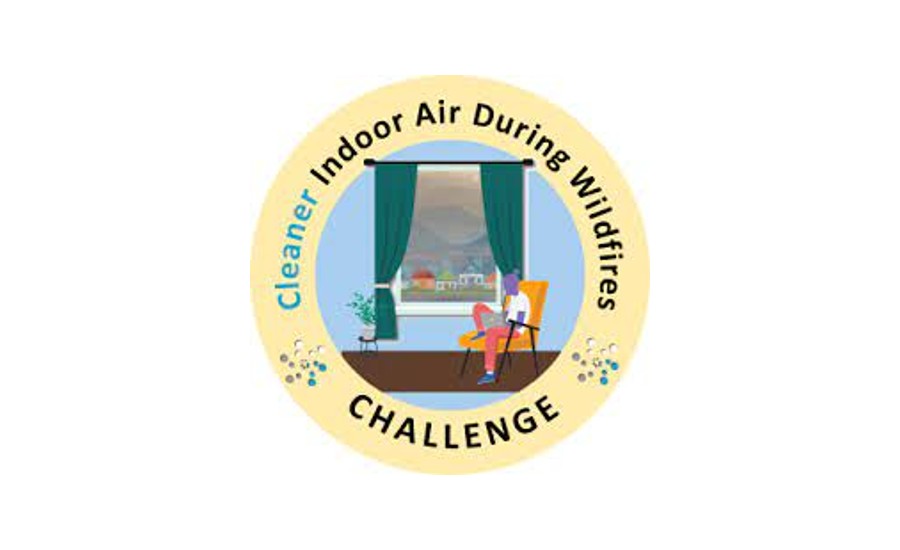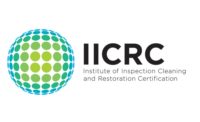EPA Announces Winners of Cleaner Indoor Air During Wildfires Challenge

The U.S. Environmental Protection Agency (EPA) has announced the winners of the Cleaner Indoor Air During Wildfires Challenge. Challenge winners receive prizes of up to $10,000 for their proposed innovative technologies that could be used in homes to clean indoor air during wildfires.
“The increasing intensity of wildfires is a major public health challenge,” said Dr. Wayne Cascio, acting principal deputy assistant administrator for science in EPA’s Office of Research and Development. “The innovative ideas proposed by the challenge winners can further our efforts to protect public health and keep indoor air as clean as possible during wildfires and other high air pollution events.”
Wildfires release many pollutants that worsen air quality in areas downwind. Particle pollution, specifically fine particulate matter (PM2.5 or particles smaller than 2.5 micrometers), is a significant component of wildfire smoke and a known health risk for people exposed to high amounts or prolonged concentrations. Wildfire smoke exposure is particularly hazardous for people with pre-existing health conditions, such as asthma or cardiovascular disease. Smoke can spread many miles during wildfires, impacting communities near and far. Recommended responses to reduce smoke exposures during wildfires include staying indoors with doors and windows closed, when possible.
Current indoor air cleaning technologies have multiple limitations that prevent their widespread use, including the cost of purchase, operation and maintenance, as well as dependence on electrical power, which can be disrupted by wildfires or rolling blackouts. The challenge winners developed detailed written proposals for affordable approaches to keep indoor air as clean as possible during periods when outdoor PM2.5 concentrations are elevated, such as during wildfire smoke events. Winners and honorable mentions from this first phase of the challenge will be invited to submit prototypes of their technologies for evaluation in a second phase of the challenge.
Challenge winners and honorable mention awardees are listed below.
Challenge Winners
- Low-Cost Household Air Purifier Requiring No Consumables – An air purifier that uses a method called cyclonic separation to remove smoke particles from the air, and this process would be enhanced by adding a fine mist of water to the air stream. Proposed by Charles Matlack and Liam Bradshaw, of Seattle, Wash.
- Rutgers Research and Design Initiative (RRDI) – A novel application of a commercial, industrial 2-phase wet scrubber modified for use in a home environment. Proposed by Alexander Sanducu, German Drazer, Edward Demauro, Lucas Hall, Aris Karapiperis, Ismail Erdi Kurtyigit, Jayesh Ratnam, Zeyneb Aamer, Maya Ziab, Anish Seth, Aryanna Arcilla, Matthew Haung, Katherine Carley, of New Brunswick, N.J.
- The Cocoon: An Accessible Low-Cost Air Cleaner for Safer Spaces During Wildfires – An air cleaner that uses a large, tube-shaped, washable fabric filter combined with a box fan to create a low-cost device. Proposed by Elliot Gall, Brett Stinson, Matthew Moore, and Warren Gunn, Portland State University, Mechanical and Materials Engineering, of Portland, Ore.
- Resonant Ultrasonic Scrubber for Indoor Air Filtration – A cleaner that uses the motion created by sound waves (ultrasonic agitation) to aerosolize water and mix with smoky air to capture particles in the air. Proposed by Eric Nutsch, BOTE Innovations, LLC, of Burley, Idaho.
- Air2-Clear2 - A filterless, extraction-based air cleaner that uses a high-flow fan to force air through a series of barriers to collect particulate matter. Proposed by Zeljko Prijovic, University of Belgrade, Serbia, and Emil Valchinov of Pazardzhik, Bulgaria.
Honorable Mentions
- Metalmark Clean Air Device – A device that uses a novel nanomaterial coating on a filter to enable destruction of captured particulate matter when the filter is heated to high temperature. Proposed by Sissi Liu, Tanya Shirman, and Elijah Shirman of Metalmark Innovations, Inc., of Boston, Mass.
- PM Shield – A kit for installing a fan in a window, bringing in filtered air, and creating enough positive pressure indoors to prevent infiltration of smoke through other cracks or openings. Proposed by Cliff Edwards, Oscar Malpica, Chuck Lee, Geoffrey Edwards, and Mahmoud Rezaee of Envisioning Labs and Warren Stiver of SCFVirtual, of Vancouver, Canada.
- Microporous Media for Airborne Pollutant Removal – A device that uses a washable, reusable pellet material to filter out particulate matter from air passed through it by a small fan. Proposed by Stephen Grunzinger, Idea Forge LLC, of Stillwater, Minn.
Read the full descriptions of winning and honorable mention proposals on the challenge website: https://www.epa.gov/air-research/winners-cleaner-indoor-air-during-wildfires-challenge
Learn more about EPA’s wildfire research: https://www.epa.gov/air-research/wildland-fire-research-protect-health-and-environment
Looking for a reprint of this article?
From high-res PDFs to custom plaques, order your copy today!





